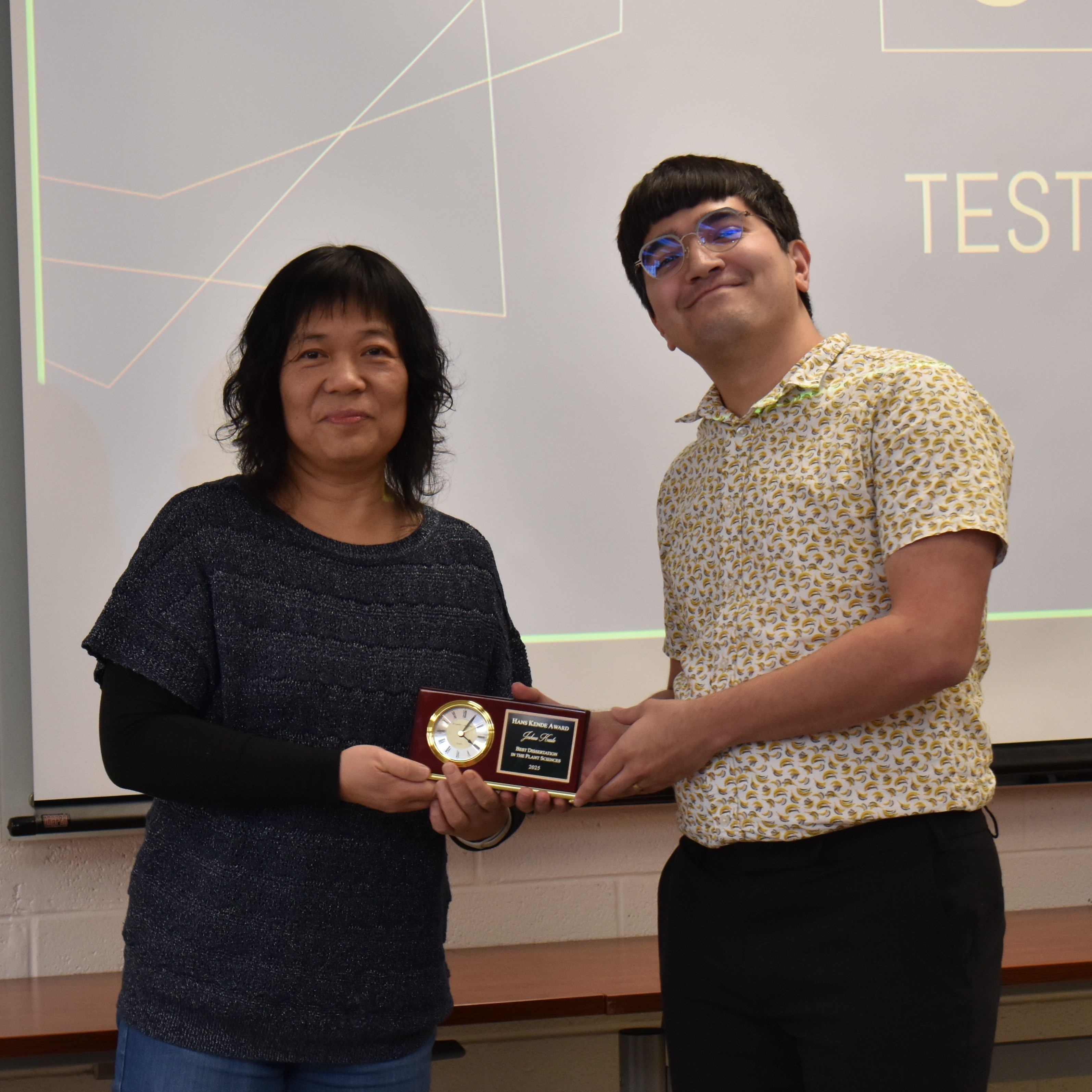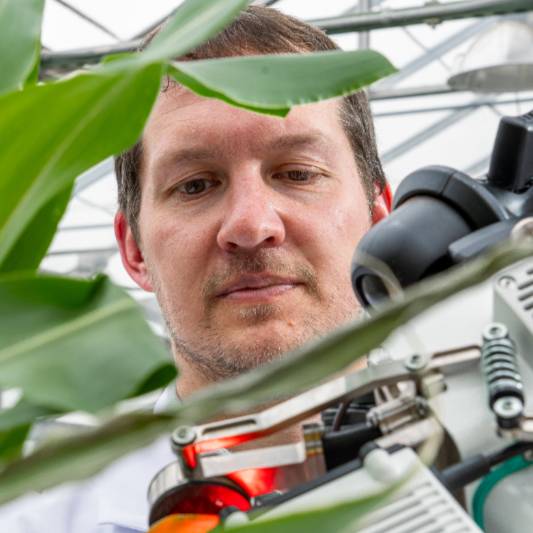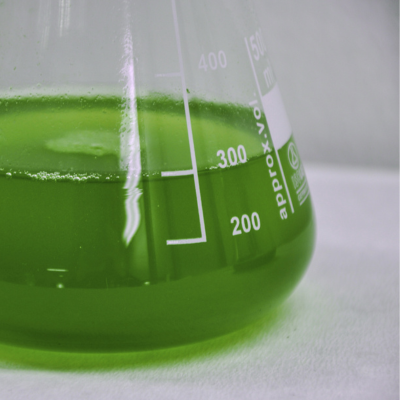‘Something funky’ is afoot with how electrons hop
Article Highlights
- Researchers found that, when a light is pointed through a crystal, the rate at which the electrons jump from one heme to another highly depended on the temperature of the crystal.
- Hemes change color — from red to pink — and the spread of the color change allows the researchers to watch the electrons move in the crystal. What surprised the researchers was that the color change was more drastically controlled by temperature compared to what was predicted by current theory.
- “We get an answer,” Josh Vermaas said. "But there’s still something funky going on.”

By the Journal of Chemical Physics
Researchers believe that understanding how electrons move within small, natural systems could power a more sustainable future for our energy grid.
That is, in part, why researchers from the Michigan State University-Department of Energy Plant Research Laboratory, or PRL, are looking at how electrons move within protein nanocrystals.
In doing so, they’ve discovered that previous theories on the subject might not apply in every case. Their latest work to reconcile theory and reality has now led to a recent publication in The Journal of Chemical Physics.
The story so far
In 2020, researchers in Dave Kramer’s lab at the PRL observed electron flow in by pointing a light source at a crystal made of proteins that contained many molecules called hemes. Heme molecules have an array of important biological processes they perform, like carrying oxygen and electrons.
The researchers found that the rate at which the electrons jump from one heme to another highly depended on the temperature of the crystal. This temperature effect is very important because it can indicate how the electrons make their jumps. Do they have to go over a big barrier like a pole vaulter, or do they make more shallow jumps like a long jumper? According to previous theory — which did use some simplifying assumptions — it should not have been temperature dependent.
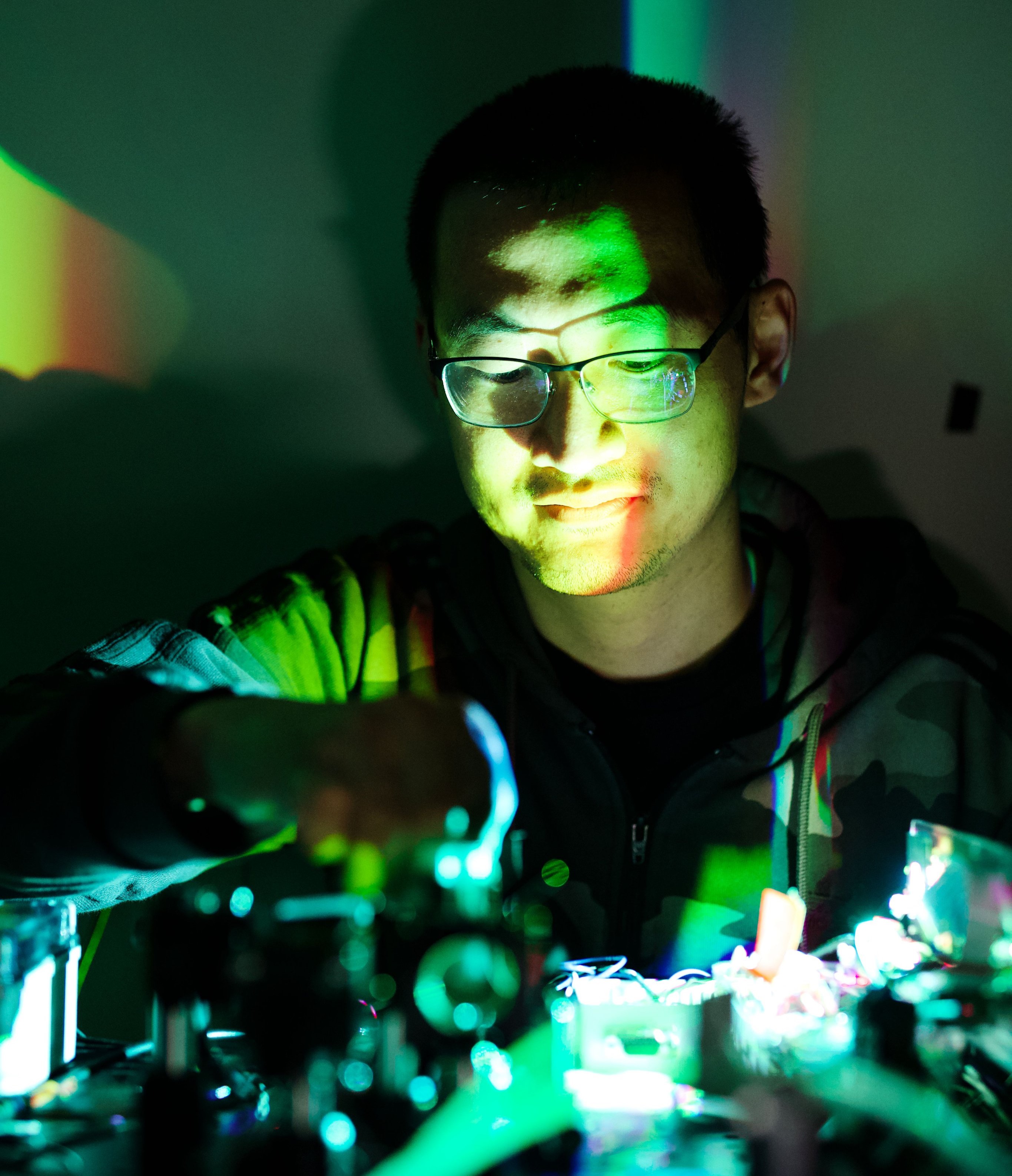
By Dave Kramer
“We got a result that is far away from the simplified theories,” said Jingcheng Huang, an author for the study and postdoctoral researcher in the Kramer lab.
“The theory works in so far as the rate constants are at the right order of magnitude, except if you start changing the temperature,” continued Josh Vermaas, assistant professor at the PRL and an author of the study.
This strange temperature dependance has led to two papers so far that attempt to explain these results. The most recent is the paper published in The Journal of Chemical Physics.
A partial match
Like a person crossing a stream by hopping rock to rock, electrons travel through the crystals by jumping from heme to heme. The researchers could track where the electrons are in the crystal based on color.
Hemes change color — from red to pink — and the spread of the color change allows the researchers to watch the electrons move in the crystal. What surprised the researchers was that the color change was more drastically controlled by temperature compared to what was predicted by current theory.
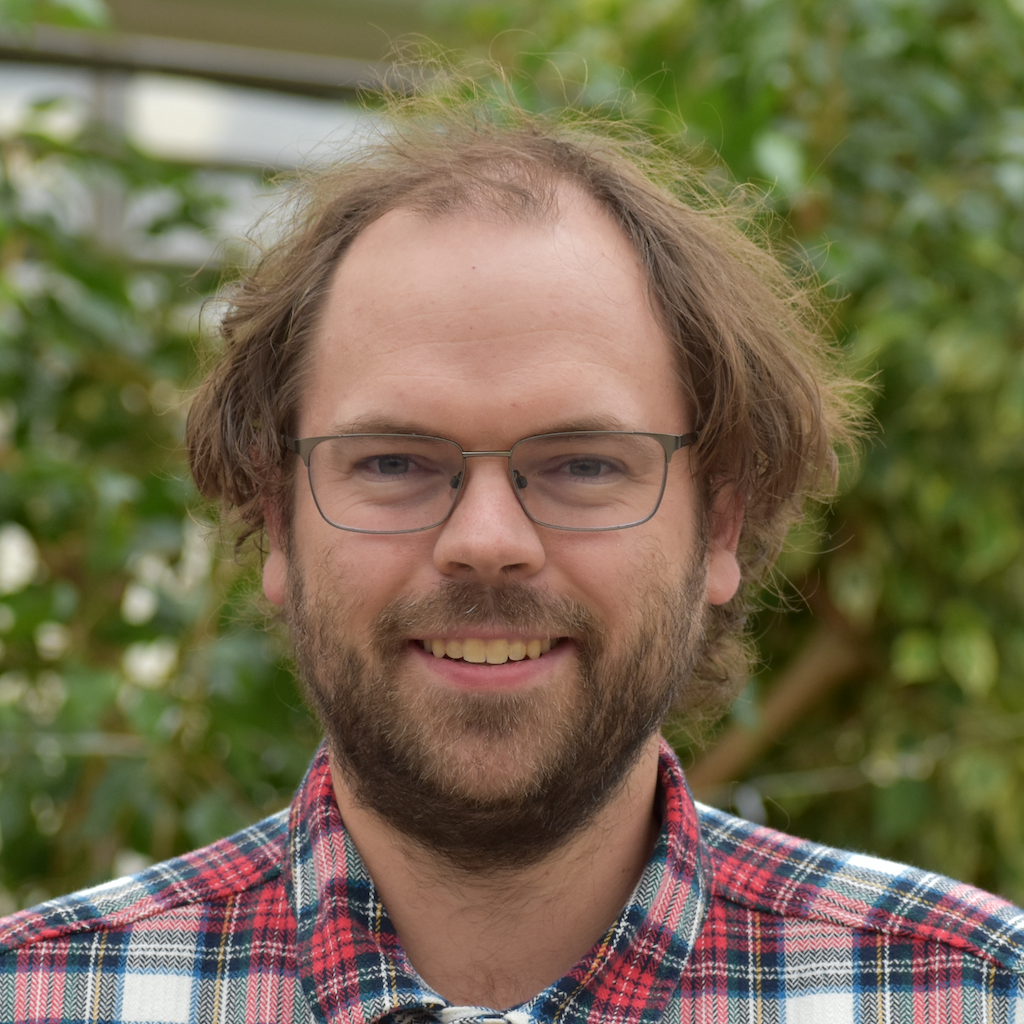
By Kara Headley
Using computer simulations known as molecular dynamics with the help from the MSU Institute for Cyber-Enabled Research, the researchers showed how this energy transfer – the movement of electrons – happens over a short period of time.
“The computer simulation confirms what we’ve observed experimentally, at least closer than the simplified theory,” Huang said. “The theory and experiment, they match partially, but there are still some things that were not included in the equation.”
“We get an answer,” Vermaas said. "But there’s still something funky going on.”
For this paper, the PRL researchers teamed up with William Parson, professor of biochemistry from the University of Washington School of Medicine. Parson’s earlier work helped provide a foundation for the PRL research and invoked the Nobel prize-winning theory of Rudolph Marcus to explain how quickly electrons can hop from heme to heme.

Courtesy photo
“Dave knew that I had been trying to generalize the semiclassical Marcus equation for electron-transfer reactions and to find ways of avoiding its most troublesome assumptions,” Parson explained. “So when Jingcheng and Dave found that the electron transfer in crystals of the small tetraheme cytochrome was much slower than the Marcus equation predicted, Dave asked if I had any suggestions. That challenge kept me up at night for over three years.”
There is still more to be uncovered with this mystery, especially for the researchers working to connect it to energy through PRL’s primary research focus: photosynthesis.
“The initial goal of my project is to try to redirect energy from the photosynthetic apparatus to some other targets, for example, to enzymes that can produce biofuel,” Huang said.
“These kinds of crystals or potentially other similar electron transfer media could be used to power that sort of thing,” Vermaas said. “We’re a long ways off, but that's the overall goal.”
The work in this article was supported by the Office of Science, Office of Basic Energy Sciences of the U.S. Department of Energy under Grant No. DE-FG02-91ER20021; the National Science Foundation under Award No. 1359494; and through computational resources and services provided by the Institute for Cyber-Enabled Research at Michigan State University.
